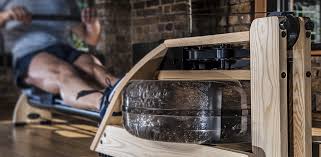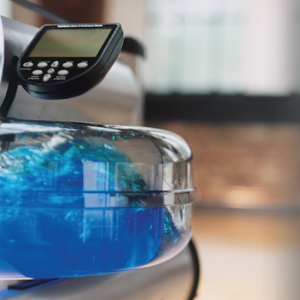Company Profile
True to its name, the WaterRower machine simulates the natural dynamics of a boat moving through water. Its unique WaterFlywheel design generates a smooth, even stroke that captures the true aesthetics of on-water rowing. Each piece is stylishly designed to create a beautiful fitness furniture centerpiece.
Founded in 1988, WaterRower manufacturing headquarters moved to Warren, RI in 1996. This facility currently employs more than 130 employees.
Situation
Through steady growth for several decades, the company handled some unusual peaks in demand, such as after a WaterRower was featured in a popular Netflix series. Then came the COVID-19 pandemic. Sharp increases in sales of the easy-to-use at-home fitness equipment rolled in at the same time as waves of supply chain issues and worker shortages.
“To stay ahead of the competitors and to move forward, you have to keep thinking of what’s next, how can we improve” said Jill Lancaster, Director of HR, Administration & Finance for WaterRower.
At the peak of the pandemic, with the influx of new workers and to keep up with increased global demand, the focus was to train quick and maximize production. Unfortunately, this is when inefficiencies crept in. There was a lot of wasteful moving; workers bounced back and forth to get specialized tools and materials needed for production, and product frequently went from the woodshop to the main floor and then back to the woodshop for rework.
Lancaster and WaterRower CEO, Peter King, heard about Polaris MEP from another Warren manufacturer, Taylor Box Company. Based on the recommendation, company leaders turned to the MEP Center to help them establish a common language for continuous improvement.
IMPACTS
| $1,000,000 in retained sales | ||
| Cost savings of $10,000 in the first year | ||
| >$500,000 investments in new processes, employee skills | ||
| 2 jobs added | ||
| >$100,000 invested in plant & information systems |

With lean training from Polaris MEP, we’ve been able to implement improvements not just work to keep our heads above water to meet the demand.
Jill Lancaster
Director of HR, Administration & Finance, WaterRower
Solution
The manufacturer first dipped its toe in the Lean Manufacturing waters by putting eight internal champions through an Introduction to Lean Principles workshop in February of 2021. Classes were hybrid due to COVID.
Seeing immediate success, WaterRower invested in on-site training for an additional 10 employees in June. To date, training has included:
- Group training in Lean principles
- Group Direct Observation /report-out training
- Implementing several iterative Lean exercises and experiments
- “Phoenix Lean” courses in error reduction, problem solving and process improvement for select leaders
Results
WaterRower met the exceptional demand for their rowing machines during the pandemic and made improvements that will drive growth in coming years.
 Workstations were adjusted based on team feedback. Engineering set up tool airdrops to reduce steps. Shipping established new systems for triggering re-orders.
Workstations were adjusted based on team feedback. Engineering set up tool airdrops to reduce steps. Shipping established new systems for triggering re-orders.
The team installed dashboards in every department to improve communications and accountability. They formed multiple huddle groups that got staffers working across siloes to understand how each department affected the others. “We’ve gone from a blame game to a solutions-oriented mindset,” said Lancaster. “They can see how everything is entwined and they can be part of fixing it.”
“We’ve definitely improved procedures and processes. We’ve formalized and streamlined processes,” she continued. This especially helped new workers.
Polaris MEP Project Manager Chris Cinieri suggested two reasons for WaterRower’s Lean success. The first was that Lancaster and King went through the training themselves.
“Employees recognized that leadership is committed to them,” said Cinieri. “While in the class, Peter and Jill would make decisions on the fly. An engineer would suggest a fix and they’d approve it on the spot. Management was truly invested in change, not a roadblock.”
The second key, said Cinieri, is that the company invested in training multiple people, over several months. “More people had that common language of Lean. They all went farther, faster because of it.”
“The whole mindset is about how can we make things better,” said Lancaster. “It takes a bit of work, for sure, and there’s a lot more that we need to do but right now we have the basics and foundation for progress.”

